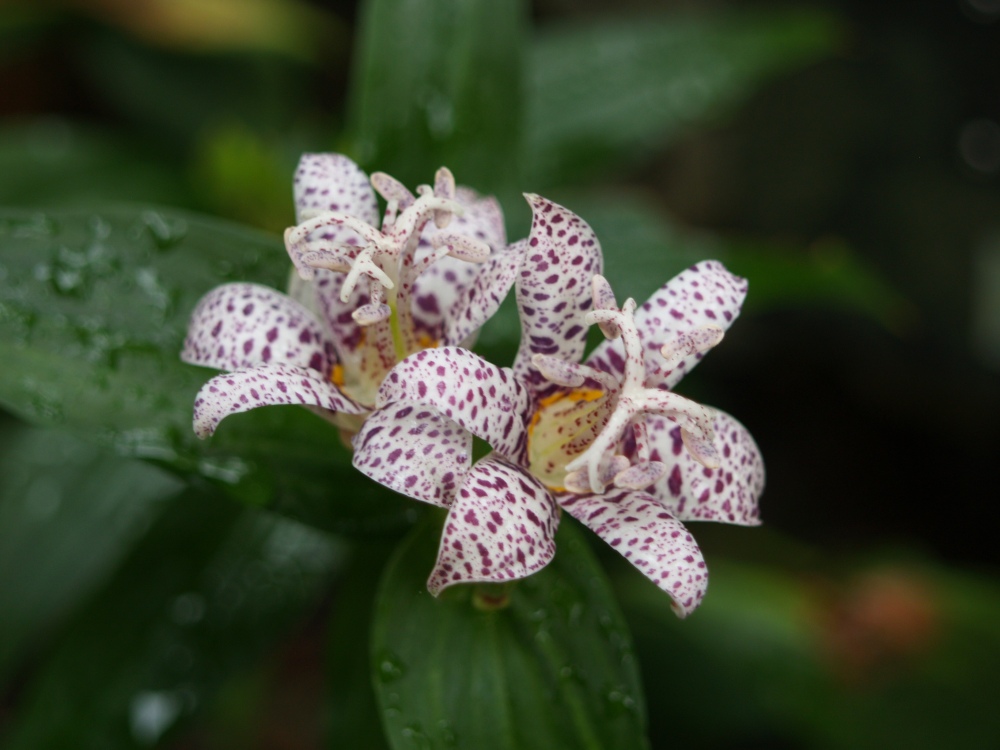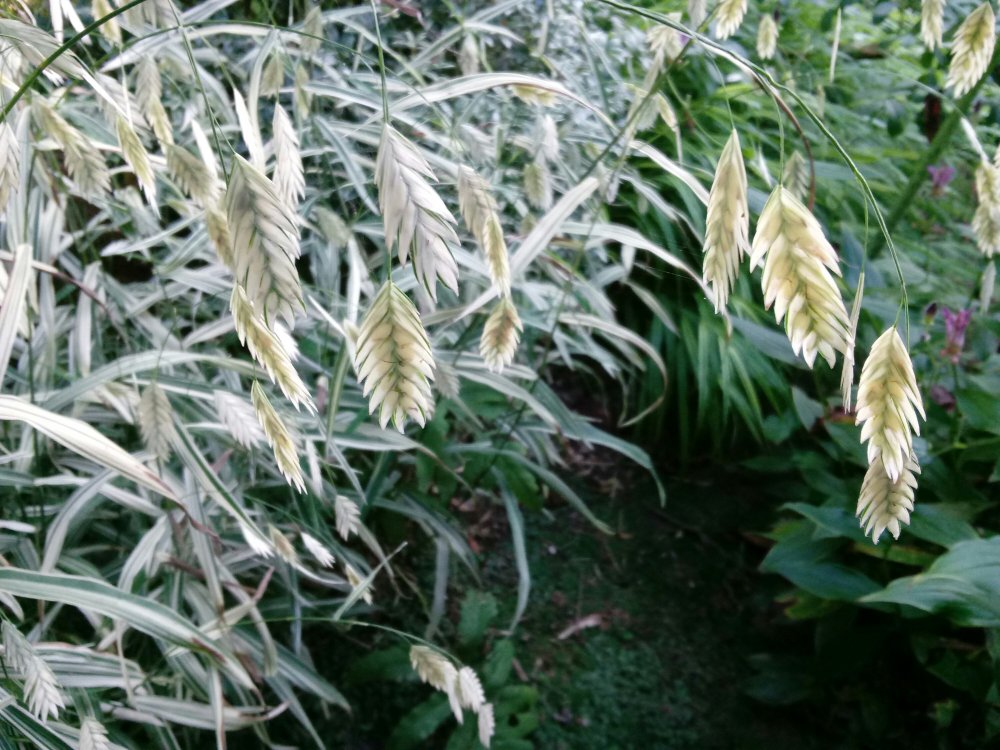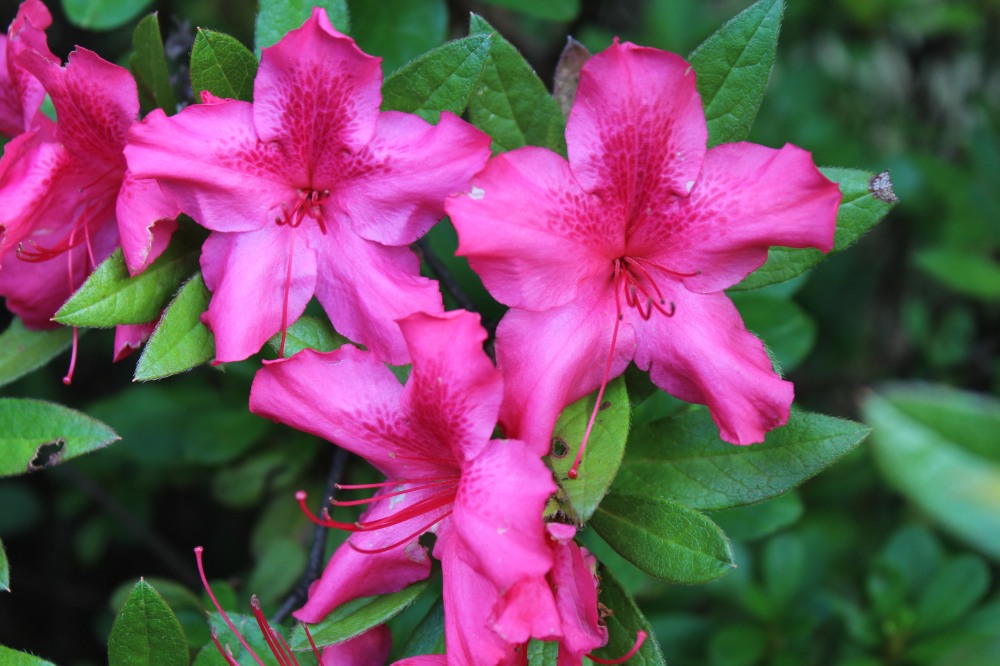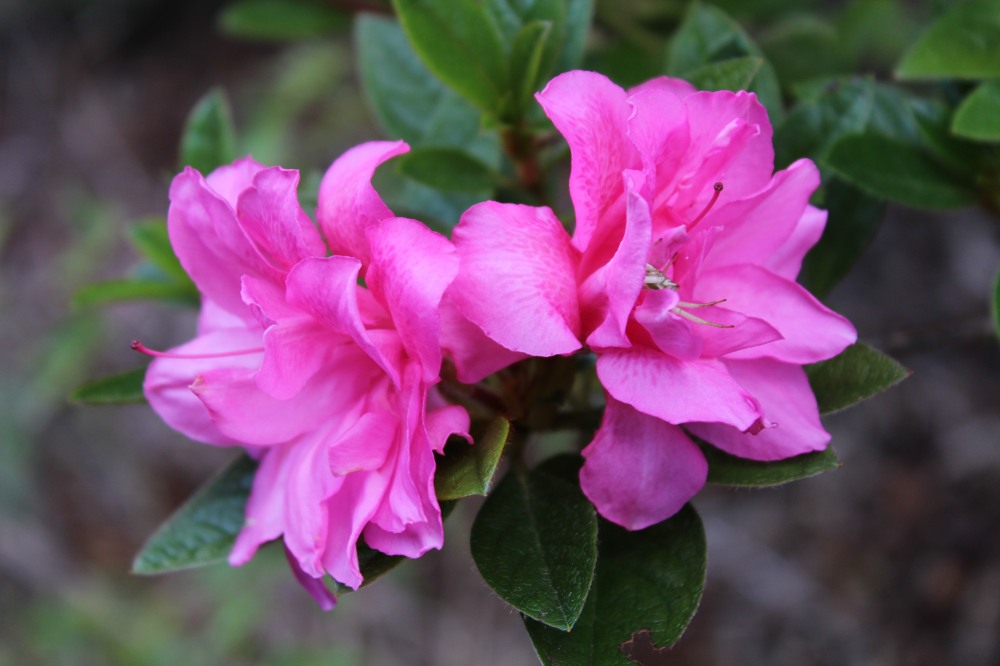Typically, I’m overjoyed by plants that seed about the garden, even Japanese maples, toad lilies, and hellebores that proliferate with such abundance that many must be discarded. While space for these has run short, room remains for sporelings of Japanese Painted and Sensitive ferns that thrive in deeper shade and regularly appear beneath shrubs and in cracks between path stones.

I am not so enthused by seedlings of Northern Sea Oats (Chasmanthium latifolium), though this grass is of moderate size, adapted to sun or shade, and with lovely dangling seedheads. New sprouts are devilishly difficult to extract without digging, and I stubbornly resist carrying tools along while strolling and weeding. Some perish as a result of my tugging, but other seedlings return with twice the vigor. Several clumps beneath low growing roses continually frustrate me.
For whatever reason, and without much consideration of the possible complications, several years ago the variegated ‘River Mist’ (Chasmanthium latifolium ‘River Mist’, above) was planted. Happily, I report not a single seedling, though the clump of three is hemmed in by long established woodies that are likely the reason. As the evergreens grow ever wider, transplanting the Sea Oats to give more space might put this to test.
Finally, several clumps of Indian Pinks (Spigelia marilandica, above) have caught on, growing vigorously, though another has faded in this summer’s constant dampness. Occasionally, there will be a few late summer flowers which are not as vibrantly colored as earlier blooms, I think, though possibly it is my eyesight that has faded in the summer sun. Regardless, the splendid flowers are welcomed.
Several of the garden’s reblooming Encore azaleas are flowering. The vagaries of late summer weather determines an unpredictable schedule for repeat flowering, but most in this garden are dependable for flowering within a several week period. While some Encores begin flowering in August, others will see first blooms in October.
Long ago, I determined to rid the garden of troublesome azaleas, with the exception of Delaware Valley White, that required no care, tolerated clay soil and tree roots in dry shade with hardly a trace of lace bugs. Somehow (with sample plants, free gets me every time), I was convinced to try Encores, with results over a few decades proving as successful as Delaware Valley, but with blooms in mid spring and then late summer into early autumn. Not all Encores are well suited to this garden, or this climate, but azaleas are again valued members of this garden.
What’s the double azalea. Is that also an encore? I thought DE Valley had white flowers?
I’ll happily take the toad lilies.
The double pink is Encore Autumn Carnation. I do a particularly poor job of labeling and remembering cultivar names, but this bubblegum pink stands out. I dislike the color, which stands out even though I’m color blind, but Carnation is one of the most earliest and most dependable bloomers spring and late summer. Others inform me that this pink is beautiful, so I state that I personally do not like this overly garish color without judgment about others who love it.
I’ve just potted the largest of toad lily seedlings for a garden club sale, but there are dozens of two and three leaf seedlings that are large enough to move that will be in the way next year. I’d be happy for someone to put them to good use.
Which garden club sale?
Four Seasons. I’m not a member, at least not yet, but I was helping dig some plants for their autumn sale, and I had toad lily and hellebore seedlings that needed to be moved.
Will look for them at GS on 9/21.
You should join FS and come to the Oct meeting. Mark Richardson will be the speaker (I’m hosting).
The toad lily seedlings will be a welcome treat I am sure.
What is the allure of Northern sea oats? To me, they look like an ornamental grass that happens to have cute little seed structures. There are plenty of ornamental grasses here, but nothing like that. Where is it endemic to?
I’m not a big fan of any grasses other than Japanese Forest grass. Sea oats are native to the eastern US, though like other natives they’re confined to specific areas.
Good winter interest, grows in shade and mastiff tolerant.
I had my phase of planting miscanthus and pennisetems, and I’m happy that all have been shaded out. Sea oats are okay except for seeding, and I very much like Japanese Forest grass. I was never much of a fan of the look of grasses in winter. Though this garden is not the tidiest, they looked ratty to me.
So, they are more ‘common’ than ‘popular’. Most of our native grasses are rare with all the exotics forcing them out.